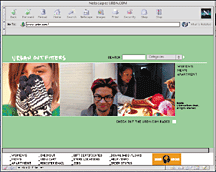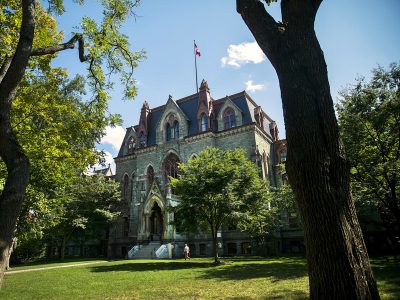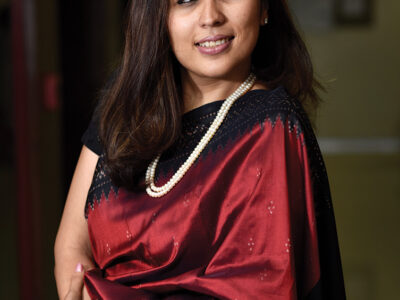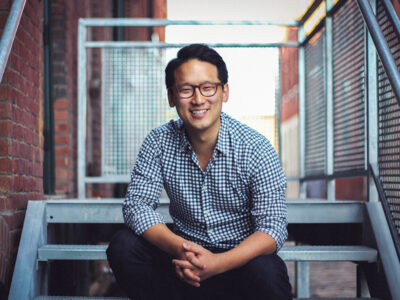
Charlie
Szoradi GAr’93 says he
never worried about whether his new-media design and marketing firm was
going to make it. Chalk it up to entrepreneurial bluster, but the president
and CEO of Monsoon Microstudios says such concerns didn’t register during
the past four years it has been conducting business inside a former church
in North Philadelphia.
“It
never was, ‘We’re going to build a business model and test it, and raise
some money,’” he says. “If the business fails,” he figured, “it’s a failure
of higher-order creative thinking.”
So
far the creative thinking has held up to market forces, with the company,
at press time in November, expected to pull in $2.5 million in revenues
and post a profit for the year. It has landed accounts with multimillion-dollar
companies such as Urban Outfitters, Sierra Global and VIP Wireless. And
Monsoon is now looking to expand its operations well beyond Philadelphia’s
borders.
Co-founded
by Szoradi, a trained architect, and Taheem “Tyme” Gadson C’93 (now an
independent producer in Miami), Monsoon grew out of an arts collective
set up in an old church-and-warehouse complex within one of the poorer
pockets of the city [“Alumni Profiles,” April 1997]. The offbeat corporate
digs matched the edgy content of its work for a small number of mainly
local clients. Monsoon’s accounts gradually grew. “$250, $2500, $25,000,
$250,000. Budgets have ramped up in four years by a factor of 10,” Szoradi
says. To get there, “it took doing all of the smaller projects really
well.”
Penn
alumni working for Monsoon include design director Jim Datz C’90 GAr’93
and research director Courtney Hanson C’99.
Szoradi
now spends about two days a week meeting with clients in a shared Manhattan
office and Monsoon has been in talks with a firm in Los Angeles to create
a West Coast office. “We have a bite on a significant account for one
of the major studios,” he says.
The
long-term goal is to keep Monsoon’s “boutique model” and build a 12- to
24-person “A-team” in several major markets: New York, Los Angeles, Chicago,
Philadelphia, and possibly Miami. “For now, this is our home,” Szoradi
says of North Philly. “In the future we may consider Old City because
it has access to more of the amenities by foot in the neighborhood.”
Szoradi,
who has been interviewed on CNN, says his small company can compete with
Madison Avenue firms by providing numerous services under one roof and
offering what he calls “integrated brand strategy.” It’s “really not asking
how big [a client’s] advertising budget is, but what they want to do with
their business. Then we work with them to leverage technology, if it’s
appropriate, to drive traffic … and combine the brand image into all the
marketing so there is a single unified message that distinguishes that
client from the competition.”
Under
the old model, Szoradi adds, “the agency sees itself as this outside provider
of information. [Instead] we’re going into the trenches with the client
to learn as much as we can about how they operate, becoming an organic
extension of their marketing department.”
In
the the Urban Outfitters assignment, for example, Monsoon brought the
culture of the store onto the Web. “The music is so important when you
go into an Urban Outfitters store, so we leveraged that by developing
an online radio station so you can click and select tracks to listen to
while browsing. Then we have links to the hottest sites about youth culture.”
Describing
Monsoon’s growth, Szoradi says, “It’s a classic story of overnight success
that took 100,000 hours.” Which doesn’t leave much time for vacation.
Szoradi did spend a week in Los Angeles last fall—meeting with potential
clients. “The work is so much fun. I’m happy to double it up socially.”
After all, he says, “what are we really doing here, but telling stories?”




